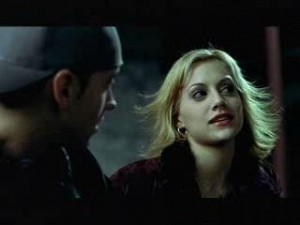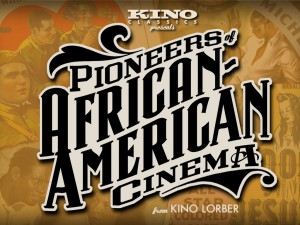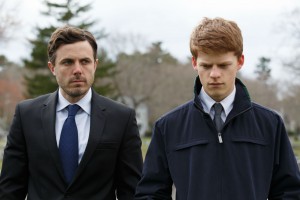 This energetic and often exciting feature from Curtis Hanson (L.A. Confidential, Wonder Boys), set in Detroit in 1995, aims to be the kind of showcase for Eminem and hip-hop that Saturday Night Fever was for John Travolta and disco, and in most respects it succeeds. Hanson depicts a far grungier world, brimming with aggression and homophobia, and one might argue that his version of the working-class “success” story is a lot more honest about the racial and sexual undercurrents of its music and milieu and at least as frank about the desperate need for some kind of transcendence. The movie has some of the braggadocio of its white-trash hero, building to its competitive climax as if it were a gladiatorial sporting event. With Kim Basinger, Mekhi Phifer, and Brittany Murphy; Scott Silver wrote the well-honed script. 118 min. Burnham Plaza, Century 12 and CineArts 6, Crown Village 18, Ford City, Gardens 1-6, Golf Glen, Lincoln Village, Norridge, North Riverside, River East 21, Village North, Webster Place. Read more
This energetic and often exciting feature from Curtis Hanson (L.A. Confidential, Wonder Boys), set in Detroit in 1995, aims to be the kind of showcase for Eminem and hip-hop that Saturday Night Fever was for John Travolta and disco, and in most respects it succeeds. Hanson depicts a far grungier world, brimming with aggression and homophobia, and one might argue that his version of the working-class “success” story is a lot more honest about the racial and sexual undercurrents of its music and milieu and at least as frank about the desperate need for some kind of transcendence. The movie has some of the braggadocio of its white-trash hero, building to its competitive climax as if it were a gladiatorial sporting event. With Kim Basinger, Mekhi Phifer, and Brittany Murphy; Scott Silver wrote the well-honed script. 118 min. Burnham Plaza, Century 12 and CineArts 6, Crown Village 18, Ford City, Gardens 1-6, Golf Glen, Lincoln Village, Norridge, North Riverside, River East 21, Village North, Webster Place. Read more

Fans of Abbas Kiarostami who have been wondering when they’ll be able to see Five (2003) — his 74-minute, five- part experimental film without dialogue, all shot on the seashore while he was scripting Jafar Panahi’s Crimson Gold — should know that it’s recently come out in France on a well-produced DVD released by MK2 and readily available from French Amazon for just under 28 Euros. [2014 note: It’s now available on U.K. Amazon.] (Like other overseas DVDs, it’s playable on any multiregional DVD player, which includes a surprising number of stateside computers.) Apparently part of the reason for the long delay was Kiarostami’s slowness in producing a “making of” documentary, though what he’s finally come up with — his hour-long About Five, completed in late 2005, available with English subtitles on the same DVD — is quite fascinating. Responding to pertinent questions put to him by English critic and programmer Geoff Andrew, he views his own work with a lot of refreshing as well as helpful candor.


Much as the French DVD of The Wind Will Carry Us, also released by MK2 (and somewhat cheaper, even though it’s a two-disc set), includes a couple of mind-boggling Japanese documentaries (also with English subtitles) that have done much to enhance my appreciation of one of Kiarostami’s greatest films, his own account of his more modest Five is no less full of surprising revelations about the elaborate artifice that lurks behind most of his seeming causalness and off-handed methods as a filmmaker.
Read more
SPECIAL CITATION for a film awaiting American distribution: Sieranevada (Romania) Cristi Puiu

FILM HERITAGE AWARD: Kino Lorber’s 5-disc collection “Pioneers of African-American Cinema”

BEST ACTOR
*1. Casey Affleck (65) – Manchester by the Sea
2. Denzel Washington (21) – Fences
3. Adam Driver (20) – Paterson

BEST ACTRESS
*1. Isabelle Huppert (55) – Elle and Things to Come
2. Annette Bening (26) – 20th Century Women
2. Sandra Hüller (26) – Toni Erdmann [tied with Bening]

BEST SUPPORTING ACTOR
*1. Mahershala Ali (72) – Moonlight
2. Jeff Bridges (18) – Hell or High Water
3. Michael Shannon (14) – Nocturnal Animals

BEST SUPPORTING ACTRESS
*1. Michelle Williams (58) – Manchester by the Sea
2. Lily Gladstone (45) – Certain Women
3. Naomie Harris (25) – Moonlight

BEST SCREENPLAY
*1. Manchester by the Sea (61) – Kenneth Lonergan
2. Moonlight (39) – Barry Jenkins
3. Hell or High Water (16) – Taylor Sheridan

BEST CINEMATOGRAPHY
*1. Moonlight (52) – James Laxton
2. La La Land (27) – Linus Sandgren
3. Silence (23) – Rodrigo Prieto

BEST PICTURE
*1. Moonlight (54)
2. Manchester by the Sea (39)
3. La La Land (31)

BEST DIRECTOR
*1. Barry Jenkins (53) – Moonlight
2. Read more
 This energetic and often exciting feature from Curtis Hanson (L.A. Confidential, Wonder Boys), set in Detroit in 1995, aims to be the kind of showcase for Eminem and hip-hop that Saturday Night Fever was for John Travolta and disco, and in most respects it succeeds. Hanson depicts a far grungier world, brimming with aggression and homophobia, and one might argue that his version of the working-class “success” story is a lot more honest about the racial and sexual undercurrents of its music and milieu and at least as frank about the desperate need for some kind of transcendence. The movie has some of the braggadocio of its white-trash hero, building to its competitive climax as if it were a gladiatorial sporting event. With Kim Basinger, Mekhi Phifer, and Brittany Murphy; Scott Silver wrote the well-honed script. 118 min. Burnham Plaza, Century 12 and CineArts 6, Crown Village 18, Ford City, Gardens 1-6, Golf Glen, Lincoln Village, Norridge, North Riverside, River East 21, Village North, Webster Place. Read more
This energetic and often exciting feature from Curtis Hanson (L.A. Confidential, Wonder Boys), set in Detroit in 1995, aims to be the kind of showcase for Eminem and hip-hop that Saturday Night Fever was for John Travolta and disco, and in most respects it succeeds. Hanson depicts a far grungier world, brimming with aggression and homophobia, and one might argue that his version of the working-class “success” story is a lot more honest about the racial and sexual undercurrents of its music and milieu and at least as frank about the desperate need for some kind of transcendence. The movie has some of the braggadocio of its white-trash hero, building to its competitive climax as if it were a gladiatorial sporting event. With Kim Basinger, Mekhi Phifer, and Brittany Murphy; Scott Silver wrote the well-honed script. 118 min. Burnham Plaza, Century 12 and CineArts 6, Crown Village 18, Ford City, Gardens 1-6, Golf Glen, Lincoln Village, Norridge, North Riverside, River East 21, Village North, Webster Place. Read more 











